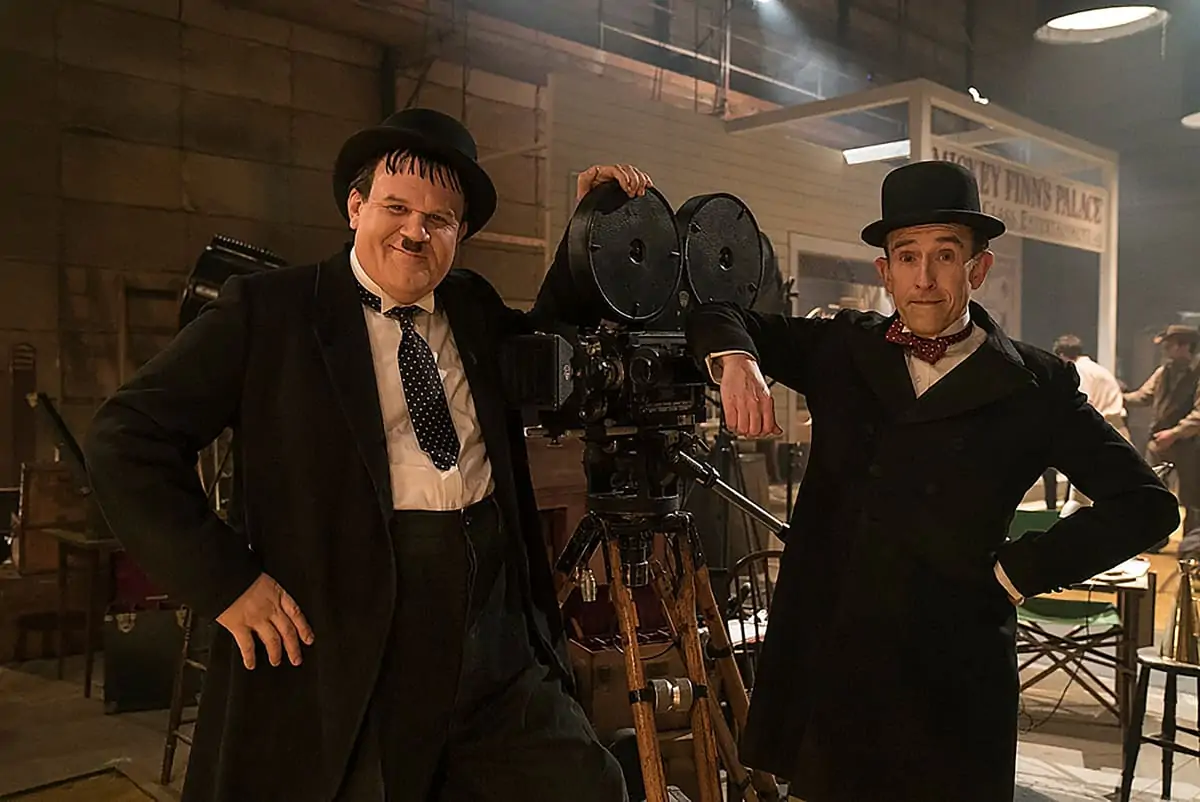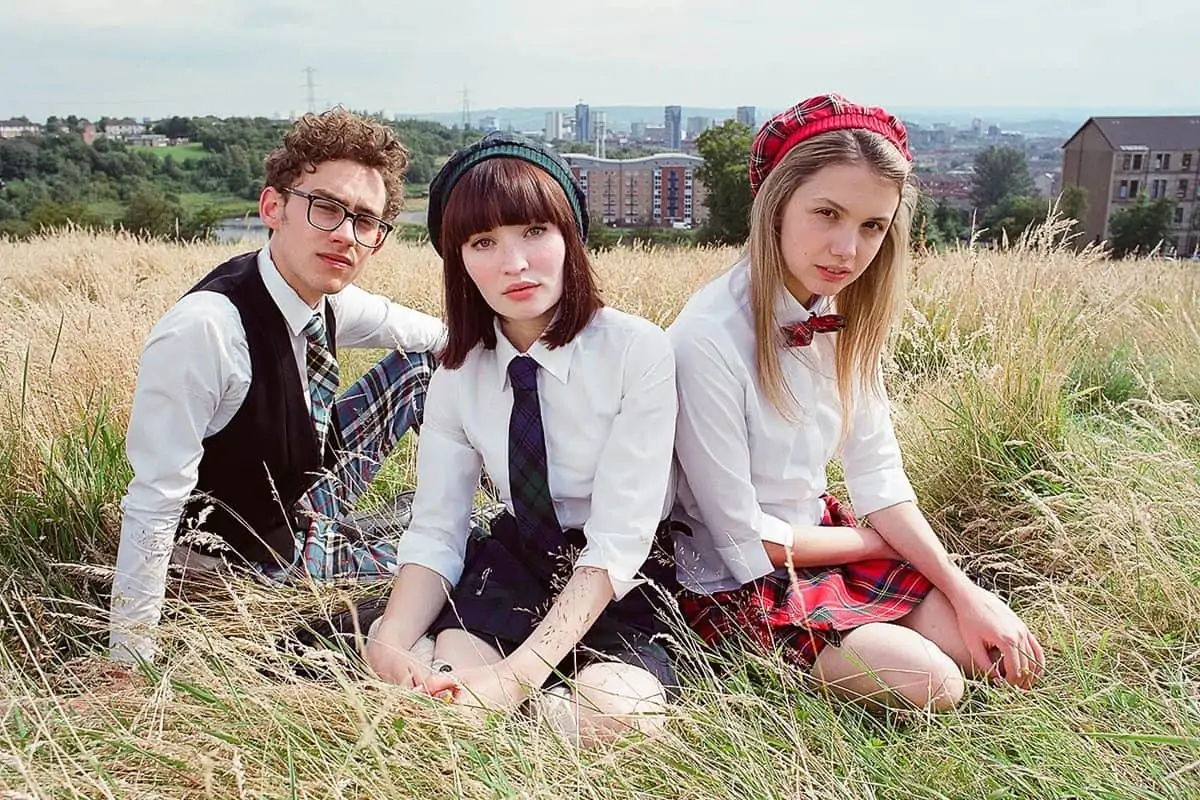A MODERN RETELLING
Laurie Rose BSC / Rebecca

A MODERN RETELLING
Laurie Rose BSC / Rebecca
BY: Adrian Pennington
Laurie Rose BSC and director Ben Wheatley have made some of the most singular British features of the past decade. From Kill List to A Field in England to Free Fire, each project appears to come from left field and represent a deliberate change of direction.
Their last feature, the kitchen sink drama Happy New Year, Colin Burstead for the BBC, was back-to-basics, shot handheld in just ten days using largely available light.
"Rebecca was the polar opposite," says Rose. "It's our first time with Working Title, first time for Netflix, our first really classic period drama."
It's also a step up in budget from High Rise and Free Fire which at around £5.5-6m were their most sizeable productions to date.
"It was a fresh challenge and frankly a little out of everyone's comfort zone," Rose says. "On low budget film you often make decisions based on what is in front of you on the day and there is a real energy and economy to that. Now, someone is asking me where would I like the window for the interior construction and what colour I'd like the walls.
"I know this is a basic tenant of filmmaking but until High Rise it had never been an option for me. On Rebecca, we had all this great production design and fabulous heritage house locations, detailed costumes and props. It opens up a whole new level of collaboration and authorship."
Naturally, everyone will be making comparisons with the 1940 Hitchcock version of Daphne Du Maurier's psychological thriller.

"I did revisit the film. It is beautiful and quite of its time in terms of the writing and the way that it clearly fitted into the studio system. The fact that it is so beloved and won Oscars (including Best Picture and George Barnes' cinematography) made this a little bit daunting but our version is a readaptation (by Jane Goldman) of the book and not a remake of the film. The result is far more faithful to the darkness of the book which actually makes it modern and relevant, especially around the idea of gas-lighting."
Rose and Wheatley are used to instinctive fast shooting, typically handheld and using locations largely unglossed by fixtures. By contrast the language for Rebecca is composed and measured using Technocrane, Steadicam and dolly.
"We only really used handheld for impact," he says. "There are 1940s style elements but really what we were doing was a modern retelling of a story that just happened to be set in the Thirties."
One particular scene typified the 1940s feel of the original, two thirds in when Jack Favell (Sam Riley) confronts Maxim de Winter (Armie Hammer), filmed in the library at Hatfield House.


"We set up a dance floor along one side and shot it theatrically in a nod to '40s studio film, with long single takes in one direction before changing direction and shooting again. Because the library had a shallow balcony around it my gaffer Julian White (Artemis Fowl) could light from there. We centred lighting around a fire place, and practicals in positions which characters move between, drinks decanters, a telephone. We choreographed on a dolly with my fantastic key grip Kevin Foy (a Rose regular since London Spy) who works the dolly like a Steadicam and equally brilliant A-camera focus puller Heather Crompton (Journey's End)." B Camera and Steadicam was James Layton (His Dark Materials). "There's such an energy to the long take. It's as close to theatre as we ever get.
"Julian introduced me to Astera tubes on Rebecca which I used a lot! Incredible amount of control. Heritage houses can be tricky to light, so lightweight, cold-burning battery LED lighting, with no distro was a godsend for us."
They used lots of larger traditional sources on machines out of windows but inside, LED fixtures (Asteras, Kino panels and the Litepanel Gemini 2x1) consistently proved versatile.
"The Gemini is a brilliant, lightweight 2x1 full spectrum panel. We also got a chance to use 'Tommy Bars', a weatherproof hi-output bi-colour LED bar system for flying on large machines.
"I needed a moon source over the cliffs of North Devon but that could cope with high wind and wet weather conditions, and they proved perfect. Zero wind resistance and plenty of soft output."
Rose has shot almost exclusively ARRI Alexa since 2013 but Rebecca was his first opportunity to use the 65mm system and full frame DNAs. "I've always been a fan of having something optically interesting you can put on the front of an Alexa sensor just to add a little soul," he says.


"ARRI Media in Uxbridge were endlessly supportive. Russell Allen and Simon Surtees let me look at all the DNAs and gave me a ton of stuff to play with. There was a wide portrait 50mm that I liked - sweet in the centre that softened out super quickly around the edges. And a red-dot variant 80mm, I fell in love with for the indescribable way it fell off and the way it flared. I wore it at every opportunity. You end up with a real voice in the lenses."
Rose also looked at a couple of interesting DNA prototypes but they sadly didn't hold up. "They were literally uncoated raw metal housings like bean tins with the markings on a bit of tape. That's what I was looking for - something that had as much character as I could get and still be operable. Because they were so early in development, the bodies just weren't robust enough to shoot with."
His B camera was Alexa LF, partly to manage data rates "which could have gone through the roof" had the 65 been the sole platform.
"As much as I fell in love with the character of the DNAs, I was a little nervous about some of the edges at full open gate on the 65. I decided to just punch to 5.5K which just rubbed the edges off of the lenses.
"Pushing to 5.5K also helped balance with the 4.5K resolution of the LF. In future I'd like to shoot full sensor to take full advantage of the true depth of 65."
The LUT, developed with Goldcrest colourist Rob Pizzey (managed on set by DIT Laura Redpath), was a deliberately light touch to capture the authentic colours of the French and English landscapes.
"I rarely want an overbearing look. I don't want it to get in the way. I wanted to be authentic to the production design. An incredible universe that we were lucky enough to occupy for one long summer."





